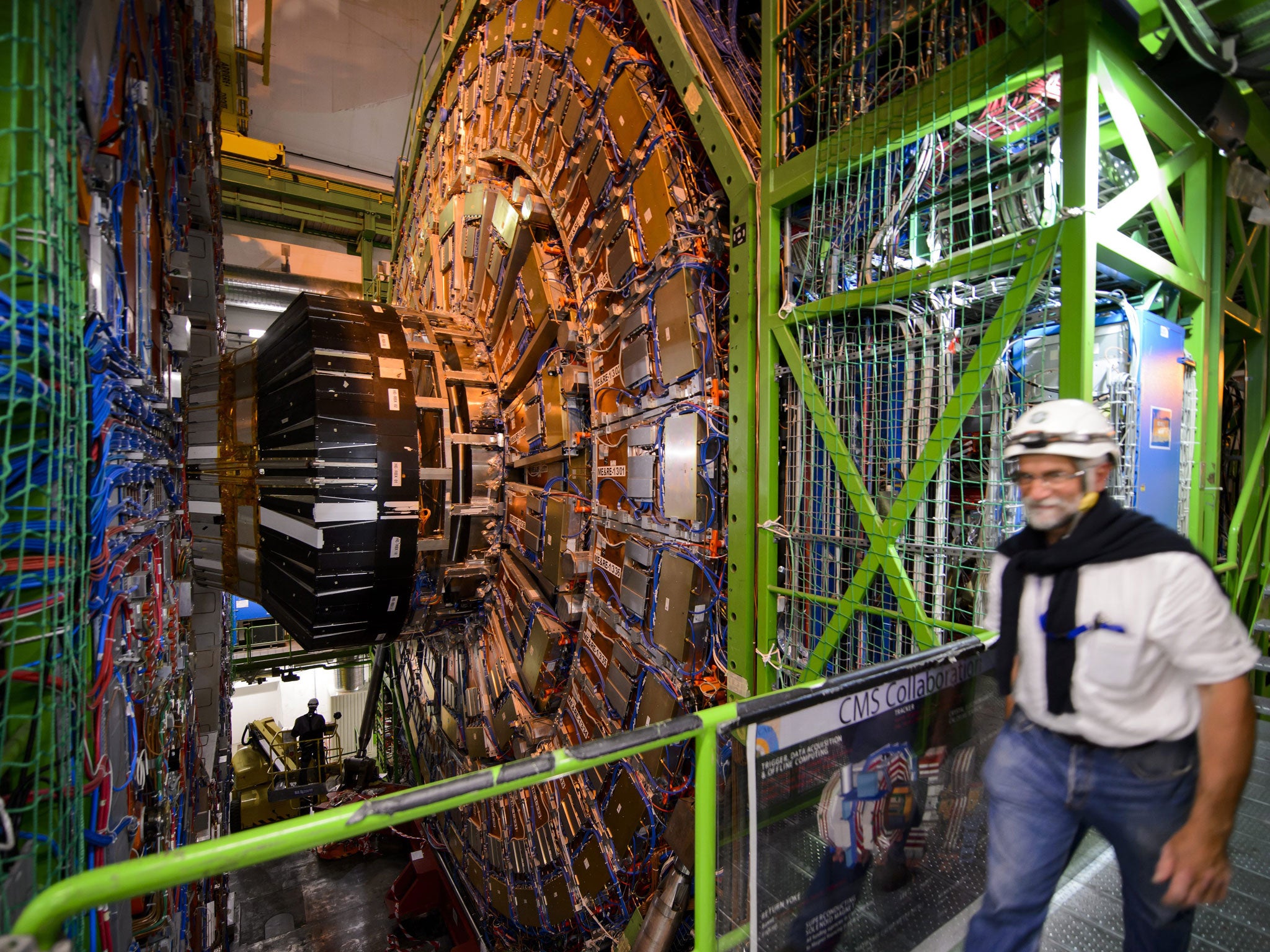Hopes fade for new particle discovery as Large Hadron Collider data found to be ‘statistical fluke’
'Basically we see nothing,' says Tiziano Camporesi, a chief scientific spokesman at Cern

Your support helps us to tell the story
From reproductive rights to climate change to Big Tech, The Independent is on the ground when the story is developing. Whether it's investigating the financials of Elon Musk's pro-Trump PAC or producing our latest documentary, 'The A Word', which shines a light on the American women fighting for reproductive rights, we know how important it is to parse out the facts from the messaging.
At such a critical moment in US history, we need reporters on the ground. Your donation allows us to keep sending journalists to speak to both sides of the story.
The Independent is trusted by Americans across the entire political spectrum. And unlike many other quality news outlets, we choose not to lock Americans out of our reporting and analysis with paywalls. We believe quality journalism should be available to everyone, paid for by those who can afford it.
Your support makes all the difference.It was tipped to be a potentially groundbreaking discovery of a new particle, which could have led to the re-writing of phsyics as we know it.
But eight months after scientists hinted at the possibility of findings “more exciting than the discovery of the Higgs [Boson] itself" from the Large Hadron Collider, the latest data has shown it to be nothing more than a statistical blip.
“Basically we see nothing,” said Tiziano Camporesi, a chief scientific spokesman at the European Centre for Nuclear Research (Cern), where the huge atom-smashing machine is located.
In December, early unconfirmed readings of an unusually high number of gamma rays during a collision were identified as possibly being produced by the decay of a new particle.
But additional research in the following months showed the data to be a random “statistical fluke,” said Dave Charlton, another Cern spokesman.
Studying similar types of rays eventually led to the tentative confirmation of the existence of the Higgs Boson particle, dubbed the “God particle”, in 2013.
In May, theoretical physicist Csaba Csaki, who isn't involved in the experiments, said: “If this is really true, then it would possibly be the most exciting thing that I have seen in particle physics in my career — more exciting than the discovery of the Higgs itself.”
However, while the new data ruled out any particle existing at the energy level the scientists had been looking at, disappointment may be the most serious outcome of the findings.
“It's a shame there wasn't a particle there, but there aren't any big ideas that would rise or fall on it being there,“ said Sean Carroll, a California Institute of Technology physicist.
The Large Hadron Collider, the world's largest and most powerful particle accelerator, was built between 1998 and 2008.
It is operating beyond expectations in its second extended run – which is ongoing – and is providing more data than expected, Mr Charlton and Mr Camporesi said, according to the Press Association.
Physicists from Cern have presented more than 50 new results, but none of them are breakthrough findings that would change current theory.
“Stay tuned, I don't think we have lost hope yet,” Mr Camporesi said.
Join our commenting forum
Join thought-provoking conversations, follow other Independent readers and see their replies
Comments